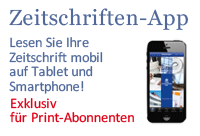Issue 5 / 2016
Articles
Wimmers, Jörg / Barudi, Malek / Rendle, Adam, The CJEU’s Communication to the Public: Better Check Before Placing a Hyperlink?, CRI 2016, 129-133
The eagerly awaited decision of the Court of Justice of the European Union in the case GS Media BV v Sanoma Media Netherlands BV and Others is not only a disappointment in its copyright reasoning. It misses the opportunity to establish clear and reliable guidelines for finding copyright relevant acts on the internet and instead creates a source of legal uncertainty and inconsistency by establishing an individual assessment of unnamed criteria. The introduction of a knowledge requirement for finding a copyright infringement is foreign to most concepts of copyright law and the different application of this knowledge requirement to different users on the internet will see different results for the same act. The hyperlink as the single most important tool for the operation of the internet and the access to information is put at risk.
Kühling, Jürgen / Schall, Tobias / Ruechardt, Corinne, Are Gmail, WhatsApp, and Skype “Electronic Communications Services" within the Meaning of the Framework Directive?, CRI 2016, 134-140
After a brief description of the nature of OTT communications services (Part I), this article examines the pros and cons of whether OTT services fulfil the criteria of the current definition of ECS in art. 2 (c) Framework Directive (Part II), ending with a concluding assessment (Part III). Though the arguments presented here draw heavily on the state of the legal debate in Germany, the arguments brought forward here are equally valid for European telecommunication law, not least because the key provision in German law (section 3 no. 24 TKG) matches the corresponding provision in art. 2 (c) Framework Directive.
Beardwood, John / Bowman, Mark, The Internet of Things and Privacy: An Analytic Framework, CRI 2016, 140-150
One of the latest emerging technologies that has arisen as a result of the existence of a free and open Internet is the Internet of Things (“IoT"). The base concept of the Internet of Things is that adding the means of communication to everyday objects, including consumer products that may not need a communication channel to perform their main functions, results in information being made available to the object or the consumer which in turn increases the utility and functionality of these objects.Both Canadian and U.S. regulators recently raised the spectre of privacy law infringements by devices utilizing the IoT (“IoT Devices"). However, while these regulators have raised certain high level privacy law issues, what has been missing from the discussion is a useful analytic framework which can be used, in each case of a collection of information by an IoT Device, to determine whether such collection triggers privacy issues, and if so, how those issues can be addressed. This paper endeavours to provide such a framework by assessing various forms of, and concluding upon, a definition for IoT Devices (II.); by reviewing a number of recent publications from Canadian and U.S. privacy regulators to highlight their perspective of the key privacy issues being raised by IoT (III.); and, finally, by providing a basic analytic framework to assess when and to what extent privacy issues are raised by IoTv(IV.).
, CRI 2016, 150-154
, CRI 2016, 154-156
Updates
Rumyantsev, Andrey, Russia: Google’s Antitrust Fines, VAT on eServices and Full-Scale Data Retention, CRI 2016, 156-159
About the Authors
About the Authors, CRI 2016, 159-160
Verlag Dr. Otto-Schmidt vom 11.10.2016 11:35




